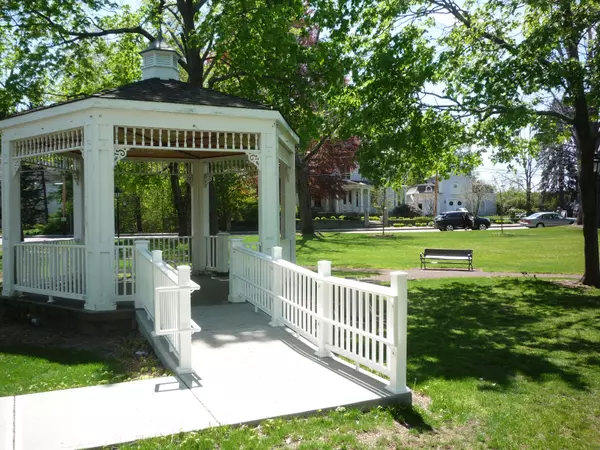Decorating Your First Home in Rhode Island and Massachusetts

- Establish a Budget
- Define Your Style
- Choose a Color Palette
- Start With Large Items First
- Do Not Buy Everything At Once
- Mix and Match
- Consider the Lighting
- Include Mirrors
- Scale Artwork To Your Wall
- Use Visual Tricks
1. Establish a Budget
Creating a budget is a foundational step in decorating your first home in Rhode Island or Massachusetts. Homeownership comes with its expenses, and decorating adds to the costs. Having a budget or a rough estimate of your spending capacity on decor is essential.
On average, homeowners may spend anywhere from $10,000 to $40,000 on decorations, depending on the quality of furnishings. If starting from scratch, especially after living with parents, costs might be higher as you gradually accumulate new furniture and decor.
Creating a budget provides clarity on whether new items can be afforded or if alternatives like buying from local markets or used furniture stores are more suitable.
2. Define Your Style
When decorating your first home, identifying your design style is paramount. From traditional to modern farmhouses, various design styles cater to different preferences. While perfection is not mandatory, choosing a style that resonates with you helps in selecting cohesive furniture and decor.
Platforms like Pinterest offer inspiration to refine your style preferences. If you're moving with existing furniture, assess what complements your chosen style and discard items that don't align.

3. Choose a Color Palette
Color plays a crucial role in evoking emotions and setting the mood in a home. Bright, warm colors stimulate energy, ideal for living rooms and kitchens, while cool colors create a calming ambiance, suitable for bedrooms and bathrooms.
Selecting a color palette for your Rhode Island or Massachusetts home enhances the mood and injects personality into the space. The 60-30-10 color ratio is a common design principle, ensuring a balanced palette throughout the home.
Consistency in color flow from room to room fosters unity and visual appeal. Consider existing colors, personal preferences, and design style when choosing your color palette.

4. Start With Large Items First
Initiate the decorating process by focusing on large items or statement pieces. Essential, everyday furniture items like bedframes, living room sofas, and dining tables are considered investments that will likely stay with you for an extended period.
Introducing these significant pieces first makes it easier to design the rest of the space around them, shaping the foundation of your dream home.

5. Do Not Buy Everything At Once
Decorating is a gradual process, and it's unnecessary to purchase everything at once. Especially when working with a budget, recognize that completing your home decor may take months to years. Budget constraints and the search for specific pieces can delay the process.
Decorating your first home is not a race; it's a continual journey of adding new pieces and furniture to reflect your evolving taste and lifestyle.
6. Mix and Match
Avoid the pitfall of uniformity by embracing variety. Mixing and matching fabrics and textures inject personality and excitement into a space, creating a visually appealing and balanced environment. Stick to a color scheme to maintain coherence while experimenting with different decor elements.
Focusing on a standout piece in each room and complementing it with smaller accent pieces allows for an interesting and eclectic look.
7. Consider the Lighting
Lighting is a transformative element in interior design, influencing the overall tone of a room. Incorporate three levels of lighting in your Rhode Island or Massachusetts home: general lighting, task lighting, and accent lighting.
Choose lighting based on the purpose of each room, ensuring a well-lit and visually appealing space. Overhead lighting and floor lamps create a bright and open feel, while table lamps with down lighting contribute to a warm and cozy ambiance.

8. Include Mirrors
Mirrors serve as practical and statement-making interior design elements. They reflect light, making a room feel more spacious and open. Strategically placing mirrors in various rooms can significantly impact the overall aesthetics.
Consider hanging mirrors above entryway tables, over living room couches, or leaning against walls to enhance the visual appeal of your Rhode Island or Massachusetts home.
9. Scale Artwork To Your Wall
Artwork and photographs are essential components of home decor. When hanging art, ensure proper scaling to fit the wall space. As a general rule, art should be 1/2 to 3/4 the width of the wall or the furniture it hangs above.
Follow the three-eighths rule for blank walls, ensuring the white space on either side of the artwork is approximately three-eighths of the width of the painting. If struggling to find a single piece, consider diptychs or triptychs for a cohesive look.
10. Use Visual Tricks
Leverage visual tricks to enhance the perception of space in your Rhode Island or Massachusetts home. These optical illusions can make small rooms or spaces with low ceilings feel more expansive. Popular tricks include hanging curtains close to the ceiling to create the illusion of height.
Methodology
Information and data for these tips were drawn from various sources, including HomeGuide, Forbes, Architectural Digest, HGTV, and Artspace, tailored to the unique needs of first-time homeowners in Rhode Island and Massachusetts.
FAQs:
What is the first thing to do when decorating?
The initial step in decorating is to create a plan. Once you have a layout for the room, you can delve into specific details like choosing artwork or determining rug sizes.
What room should you decorate first?
Start with the most frequently used rooms, such as the living room and bedrooms, when decorating your Rhode Island or Massachusetts home.
In what order should decorating be done?
Begin with fixed finishes like countertops and cabinets, followed by floor or wall coverings, significant furniture pieces, smaller furniture items, lighting, and accessories.
In conclusion, turning a house into a home involves infusing your personality and favorite elements into the space. You don't need to be a professional designer to create functional and inviting rooms in your Rhode Island or Massachusetts home – just follow these tailored tips. If you're making the move and ready to buy your first home in the region, consider reaching out to the local experts for guidance.
Categories
Recent Posts












